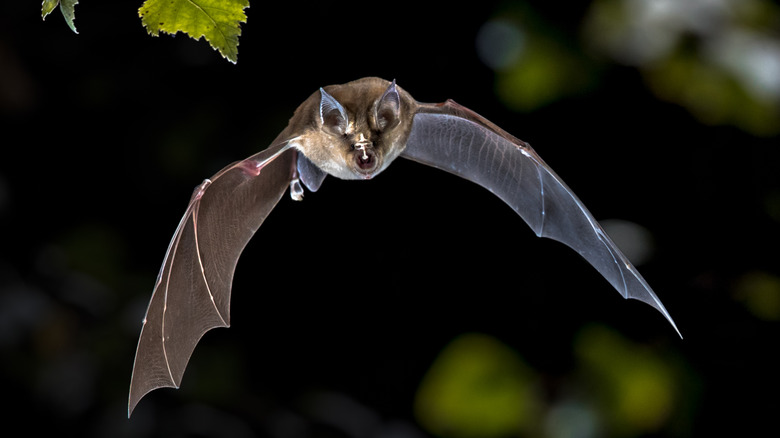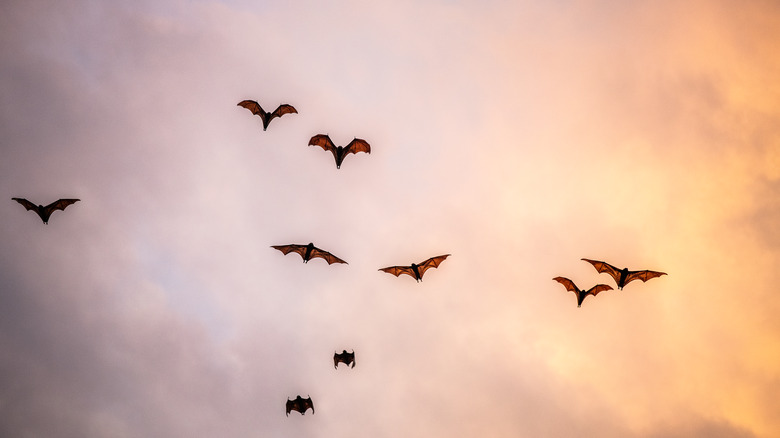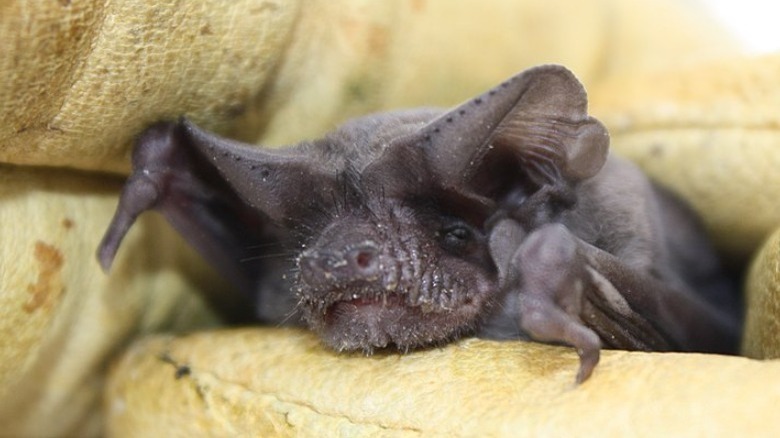Do Bats Ever Get Confused By Each Other's Sonar?
Humans rely on five basic senses to navigate the world. Sight, smell, taste, touch, and audio cues are how we understand our surroundings. But for many animals, there are a number of other ways to find food and survive out in the wild. Some are mostly blind and rely on enhanced taste and smell, while others use tools that aren't available to us naturally. For bats, there's one particular skill that gets them what they need: echolocation.
There are hundreds of species of bats in the world, and about half of them rely on echolocation (via Scientific American). It involves making a specific noise and listening for the echo when it returns, which helps them figure out where prey and objects are around them even in the middle of the night (per ThoughtCo). It's a handy ability to have when you hunt at night. But many species of bats swarm together when they hunt, so how do they tell their own echoes apart from all the others?
Developing a unique sound
Echolocation is a complicated process with a lot of variations. Some bats click their tongues, while others expel the noises through their noses like a megaphone (via Scientific American). Depending on how far they are from their prey, bats can also change the length and volume of their calls. According to Mental Floss, bats can shift to shorter, quieter calls when they are in a swarm to prevent interfering with other bats' signals, which helps to eliminate confusion.
But that's not the only way bats keep themselves from getting confused. The noises bats make to echolocate can cover a range of frequencies, most of which aren't audible to human beings, and they can adjust those frequencies on command (via Today I Found Out). If two bats are hunting in the same area, one of them might make the decision to change their frequency slightly to prevent getting confused and missing out on a good meal.
Handling interference
Not every species of bat decides to be that nice, though. While some bats will change their frequencies and the length and volume of their calls to prevent confusion, others have learned to deliberately cause interference with their calls. According to National Geographic, the Mexican free-tailed bat has developed a specific sound that makes other bats much less likely to catch their prey. The bats have to make the noise at a certain time during a bat's dive for food for it to be effective, so it's likely not an accident (via National Geographic).
Though many bats do learn to communicate with one another and make nights out hunting beneficial for everyone, it could be that others are trying to make sure they get the lion's share of the meal. And the new call seems to be pretty effective. When other bats are exposed to it, according to National Geographic, their success rate for catching a meal drops from 70% all the way down to 20%.


